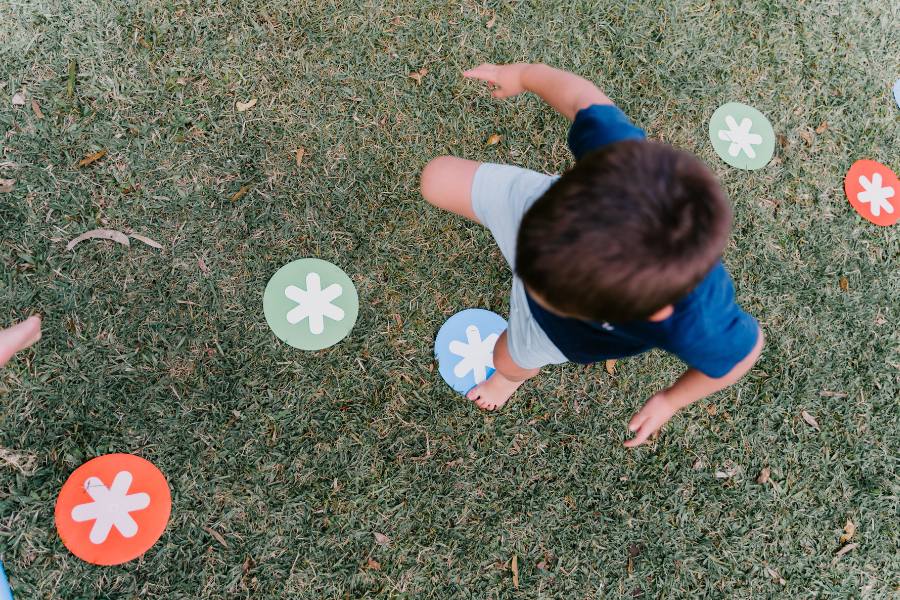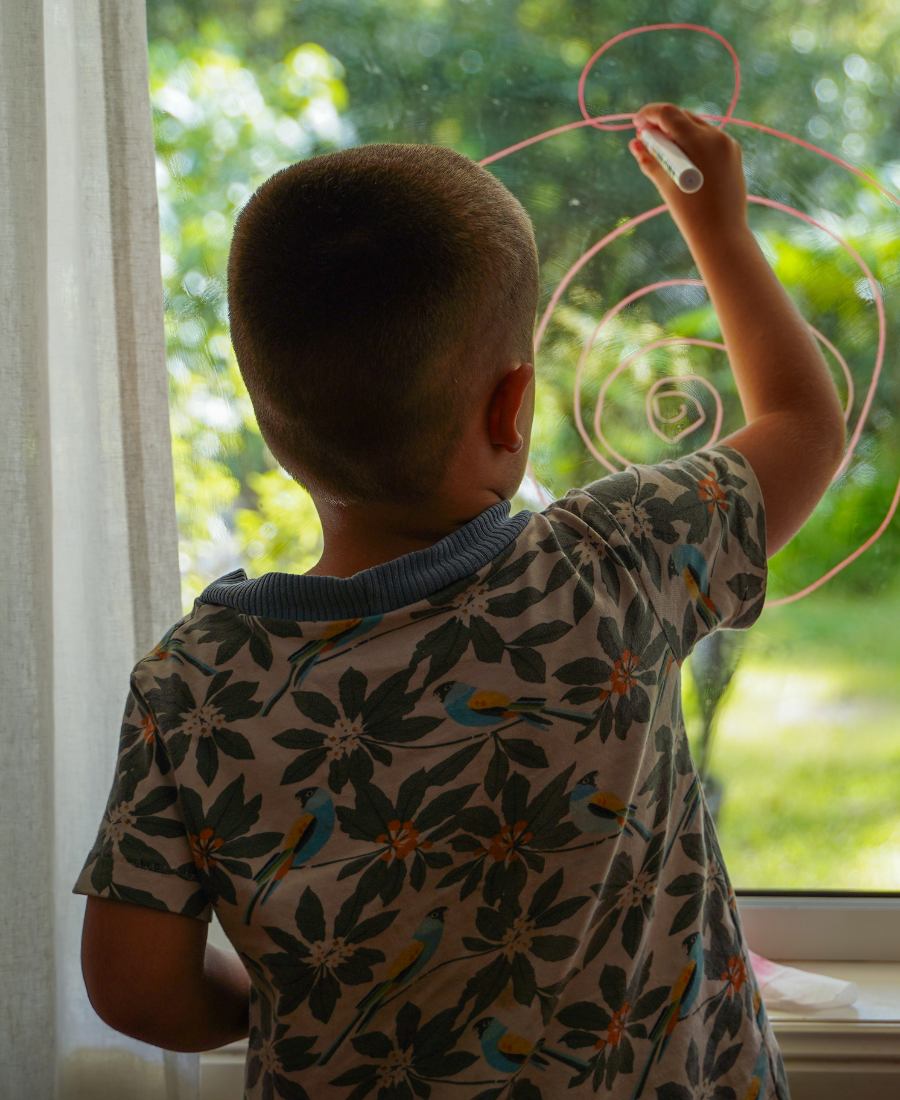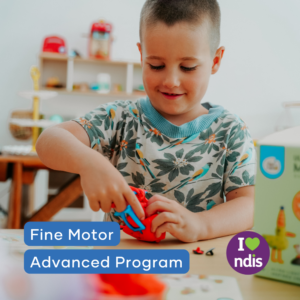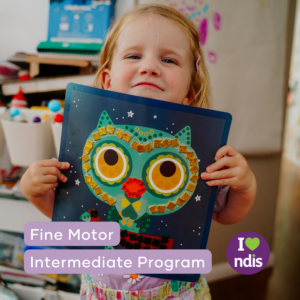
As with any part of parenting, it’s easy to get caught up in milestones and benchmarks. Fine motor development isn’t exempt from parent worry. The pressure to have our kids sitting at a table and completing fine motor tasks like drawing, colouring, writing and cutting by the time they should be, particularly when it seems like all the other kids their age are, can be overwhelming. What if I told you that the key to building fine motor skills for your child might just be to keep it fun? In this blog post, we’ll explore creative ways to foster fine motor development beyond the table setting.
As OTs, we focus on building and refining foundational skills and building from there to support the development of more complex fine motor abilities. Let’s take some time to explore ideas to do just that with your child.
Consider the core
The ‘core’ refers to the group of muscles in the central part of the body, including the abdomen, lower back, pelvis and hips. Core strength is the ability of these muscles to work together to provide a solid foundation for various movements. There are many fun ways to build your child’s core strength, let’s explore a few:
- Play and embrace animal imitation games and mimic the movements of animals. For example, pretend to be various animals like snakes slithering on the ground, frogs leaping or bears crawling.
- Create balance challenges by using cushions, stepping stones or even walking along a line taped on the floor. Such challenges will encourage your child to engage their core muscles to maintain stability and balance.
- Swimming is an excellent full-body workout that naturally engages the core. Encourage your child to swim or play water games that involve moving different parts of their body in the water.
- Set up obstacle courses in your backyard or living room. Include activities that require crawling under tables, climbing over cushions and jumping over obstacles. These dynamic movements engage the core muscles in various ways.

Shoulder the burden
The shoulder girdle is a set of bones and associated muscles that connect the upper limb (arm) to the axial skeleton. The shoulder girdle helps your child to move their arms, reach, lift, throw and carry objects and prevents dislocations during movements. The shoulder girdle is vital for the coordination and control of fine motor skills. Given its importance, let’s look at how to strengthen your child’s shoulder girdle:
- Encourage your child to use monkey bars at the playground, promoting hanging and swinging movements that engage the muscles around the shoulders.
- Create opportunities for climbing activities, whether it’s on a climbing wall, a tree, or playground equipment. Climbing engages the shoulder girdle muscles as well as the upper body.
- Who doesn’t love a game of Keepy Uppy (thanks, Bluey!) or balloon volleyball? During these games, your child will use overhead movements to hit the balloon, promoting shoulder girdle strength without even noticing!
- Play tug of war with your child. This game not only works on core strength but also engages the shoulder muscles as they pull against resistance.
- Engage in wheelbarrow walks, where you hold onto your child’s ankles and they walk on their hands. This activity challenges the shoulder girdle muscles and improves overall upper body strength.
Get a grip
Hand strength refers to the ability of the muscles in the hand to exert force and control movement. It involves the muscles of the fingers, thumb, palm and wrist working together cohesively. Hand strength is needed for tasks requiring manipulation, grasp and control of objects. Let me share some of my favourite ways to develop hand and finger strength in kids:
- Rolling, squishing and moulding playdough is a great way to enhance hand and finger strength. Encourage your child to create various shapes, letters or objects. Tools like playdough hair can also be a fun way to practise scissor skills by giving haircuts.
- Some kids love helping around the house, particularly younger kids. Have your child help to hang out washing by using clothes pegs to clip small clothing items to a line or clothes airer. The pinching motion engages the muscles in the fingers and improves grip strength.
- Engage in building activities using blocks, construction toys, or even building a stick hut outdoors. The act of stacking and manipulating blocks and sticks helps strengthen the fingers and improves precision in hand movements.
- Water play can be beneficial for hand strength. Use squeeze bottles, water guns, liquid droppers or sponges to engage in water activities that require hand and finger coordination.
- Transform the shower into an art studio by encouraging your child to draw on the foggy shower screen. Let them draw patterns, write numbers and names, doodle, or write messages on the glass.

By infusing creativity and fun into everyday activities, you can support your child’s fine motor development in a natural and enjoyable way. Let go of the pressure, embrace the joy of learning through play and watch as your child’s fine motor skills develop beyond the table top.
4 APRIL 2024
WRITTEN BY KAIT CUMMINS
OCCUPATIONAL THERAPIST THE PLAY WAY / THE PLAY PROJECTS





